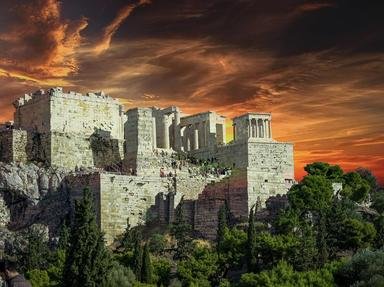Quiz Answer Key and Fun Facts
1. After which event in Greek history, one that caused much destruction in the polis of Athens, was the Erechtheion constructed?
2. Many today believe that Mnescles was the architect of the Erechtheion, however, which of the following is credited with being the sculptor and mason of the project?
3. What important event in ancient Athenian mythology or history is believed to have taken place on the site where the Erechtheion was completed in 406 BC?
4. The north side of the Erechtheion features a porch of caryatids. A caryatid is an architectural post that takes the place of a column. What, however, is the form of a caryatid?
5. All of the caryatids made for the Erechtheion look alike.
6. The caryatids of the Erechtheion have noticeably lost their arms. According to Roman copies, however, it is believed the caryatids were holding what object in their hands?
7. In ancient times the Erechtheion was used as a pagan temple. During the early Byzantine period, the building was transformed into a church that honored Theotokos. Who was Theotokos?
8. It is well known that throughout its history the Erechtheion has been used as a palace and a harem. In ancient times Athena's sacred snake lived there.
9. The Erectheum is not the only building of the ancient world to feature caryatids. Which Roman temple, commissioned by Marcus Agrippa, is also believed to have been decorated with caryatids at one time?
10. Five of the six caryatids of the Erechtheum found a home in the Old Acropolis Museum in 1979, and stayed there until it was moved to the New Acropolis Museum in 2007. Where can the sixth caryatid be found?
Source: Author
ponycargirl
This quiz was reviewed by FunTrivia editor
bloomsby before going online.
Any errors found in FunTrivia content are routinely corrected through our feedback system.
